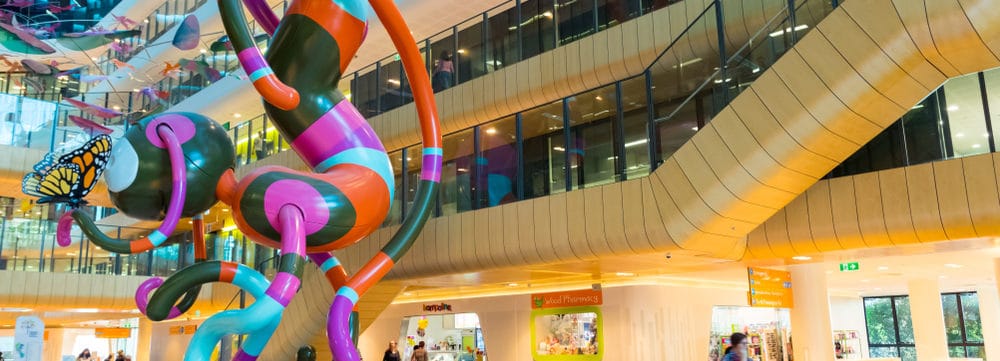Blog
The Importance of Art in Healthcare Design

When it comes to healthcare design, art can make all the difference. Normally when one thinks of a hospital, thoughts of sterile hallways and cold floors come to mind. This has led to a reputation that medical facilities are foreign and alienating. Artwork is one way of improving this image. But art has more to offer than just pleasing aesthetics.
Entering a hospital is an experience unto itself. There are new sounds, colors, smells, faces, and decorations. The beeping of the heart monitor, for example, is an easily recognizable sound that informs the person that they are in a medical setting. For some, this sound can be uncomfortable because the two different sounds the heart monitor makes represents life and death. The presence of art can alter these kinds of patient experiences for the better.
Art Can Transcend Time and Location
Art doesn’t provide a calming effect just because it’s aesthetically appealing, but because it can transport us to a different intellectual space. In this space, we temporarily leave our current surroundings and are instead enmeshed in the art itself. The environment we temporarily occupy in our minds provides a new experience, which can impart to us a range of new emotions, including serenity and happiness.
Artwork provides a way of modifying the surrounding environment by offering a brief glimpse into a different place and time. This helps to improve the environment of a hospital and the experience that patients have. Research from Scotland found that not only do patient recovery times improve when art is present, but that patients frequently preferred art that displayed landscape and nature scenes. Natural settings have been shown to correlate with patient wellbeing.
Art Improves Recovery Time and Patient Experience
Using research to measure patient outcomes with or without art present is one thing, but explaining what’s actually going on is another. But research from Sweden attempted to explain this process more clearly. First, the research confirmed that the presence of art does, in fact, improve patient health and recovery times. But the research also noted that artwork provides a completely new experience for patients.
Coming from a sociological and anthropological point of view, the researchers noted that artworks “contribute in creating an environment and atmosphere where patients can socialize and stay connected to the world and life outside the hospital, themselves and their spirit.” Artwork has a way of altering patient experiences that keep them grounded while receiving treatment. They are reminded of the world outside of the hospital and what’s waiting for them once they recover.
Evidence-based design has proven that art can improve patient health and recovery times. But art does more than just provide patients something pretty to look at. It provides a completely new experience that keeps them grounded to the outside world and to themselves. The experience the artwork provides melds with the experience of being in a hospital and provides comfort to patients.
Marie Wikoff is the creator of Wikoff Design Studio based out of Reno, Nevada. Her expertise in healthcare design has helped modernize healthcare organizations locally, regionally, and internationally, improving patient experience and outcomes. Her credentials include Evidence-Based Design Accreditation and Certification (EDAC), American Academy of Healthcare Interior Designer (CHID), the National Council of Interior Design Qualification (NCIDQ) and LEED AP. Contact Marie Wikoff
Feature Image:
Melbourne, Australia – June 7, 2019: The Royal Children’s Hospital is a public pediatric hospital in Parkville. Photo by Nils Versemann







